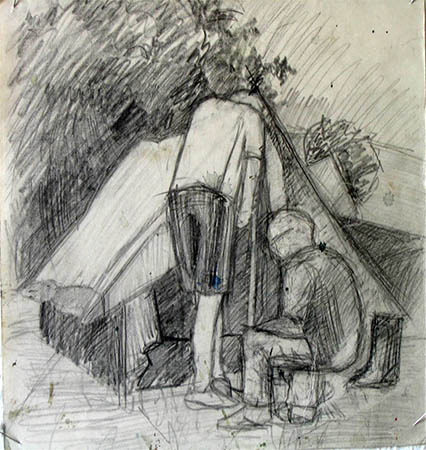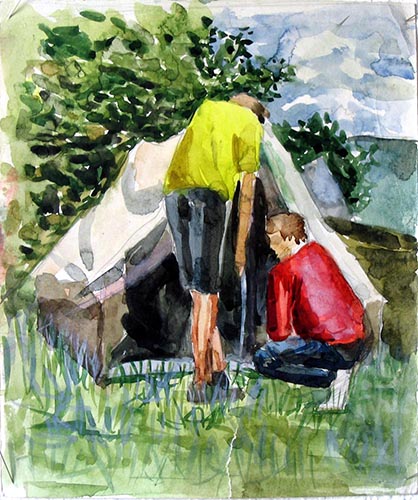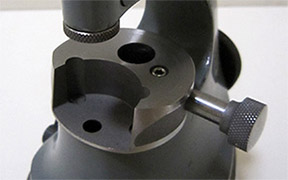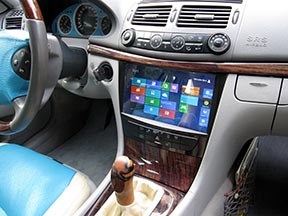Nothing can shake the following axiom in me: every creation testifies to the creator.
Francois-Marie Arue Voltaire
Oil
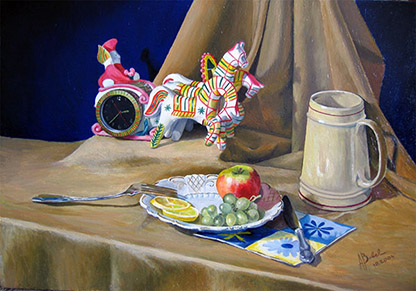
Russian-German motifs are connected in the painting "Still Life with the Troika." I made the sculptural composition "Troika" in an artschool. These figures have the typical features of a Filimonov toy. It is not difficult to guess that this Russian folk craft symbolizes the Russian part of the canvas .The traditional German beer mug - the German. The plate with fruit, located in the foreground, has neutral character, for the enliven the plot. 2004
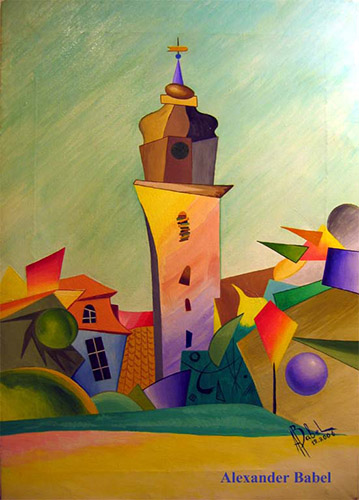
Trinitatisskirche is in Sondershausen. Onetime in the gymnasium, on art lesson, it was the task to depict this church first in the drawing, and then in some art style. I was interested in cubism, and I tried myself in this style. 2006
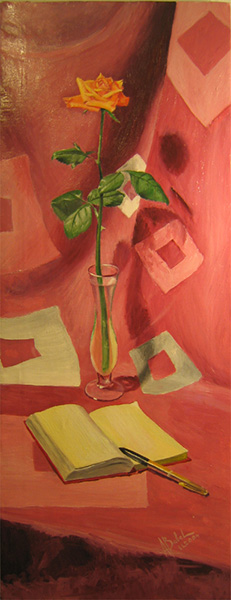
The plot with the rose appeared spontaneously. This flower was given by Mrs. Rudolph about the completion of the language courses. The rosa beautifully blossomed, had a pleasant color and looked picturesque. To her was added a notebook with a fountain pen and drapery of the background. 2004
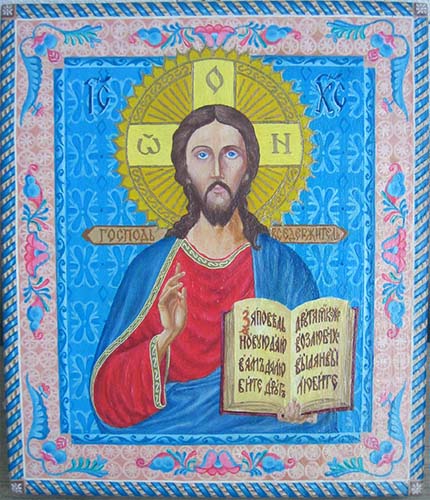
The icon was painted for a friend of the family - Father Dionysius. After his death, the fate of the icon is unknown. 2006
IMAGO Erfurt


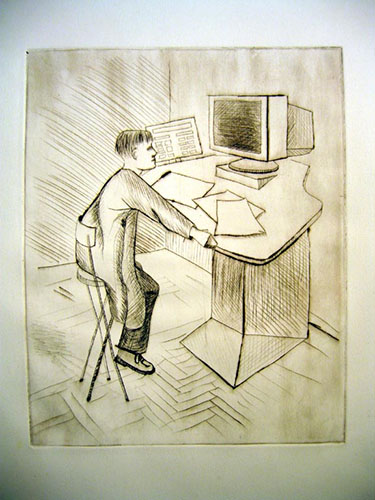
Graffiti Workshop 2004, Erfurt

Graffiti is a crime or an art?
The InterCityHotel is located at the train station in Erfurt. One of its walls went to the railway tracks and was a victim of spray cans from the graffiti. What to do with just a spoiled wall? The hotel manager Jürgen Karl Kramer and the head of the IMAGO school Anne-Katraine Mashke gathered several people to create art on this wall, measuring 13x15 meters.
We thank:
- InterCityHotel Erfurt, manager sir Jürgen Karl Kramer
- IMAGO Erfurt, head of the course Mrs. Kotsaku
and team:
- Leon Wagner, Aron Pekar, Claudia Otte, Alexander Babel, Jenny Seidel, Josepha Holland-Merten, David Ehrenberg, Mathias Flücke, Oliver König.
ERFURT 07.2004
Gymnasium, Sondershausen
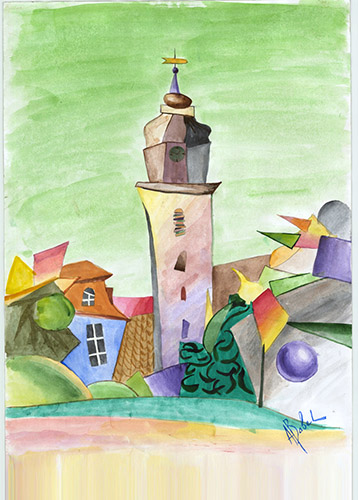


Higher schoole, Frankfurt am Main
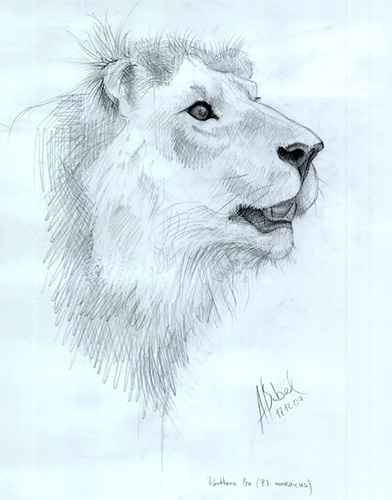
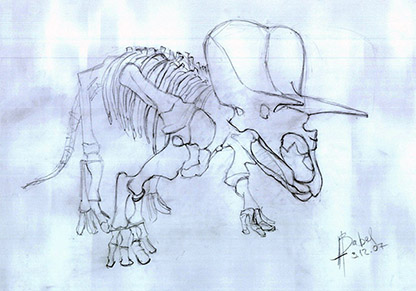

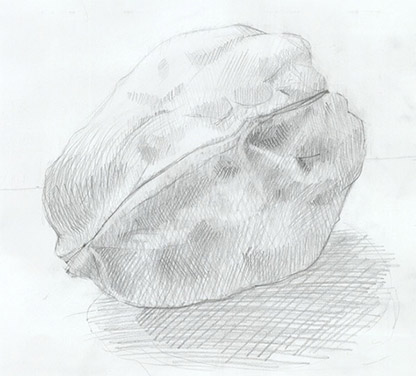
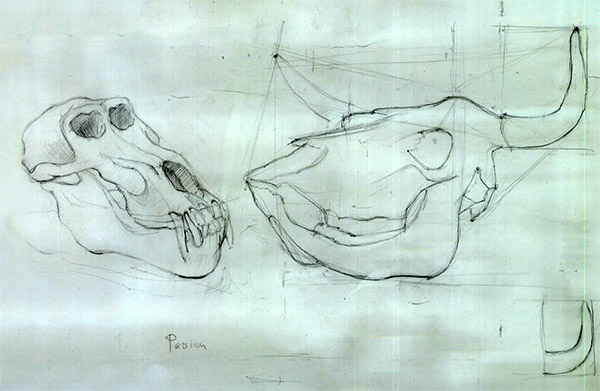

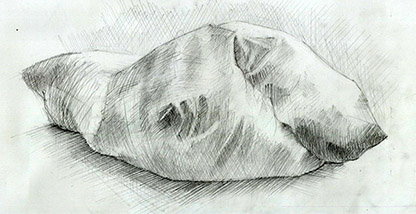
At the age of 11, I passionately wanted to learn how to draw, and in 1997 I started attending an art school in which I studied this science for 4 long years. At this time, the director of the school was Sergei Nikolayevich Pingachov.
Classes were three times a week for 4-5 hours a day. Most of these drawings were created during school lessons. For one work was a time-limit about 9-12 lessons, it is 6-8 astronomical hours. Starting with simple geometric figures and gradually moving to various complexity of still life, we acquired the ability to work in pencil and watercolor.
The first acquaintance with plastic was at the lessons of applied arts. The material was clay. Basically we made Filimonov toys, but I also tried to make Dymkovo and Abashev toys.
There were also lessons of sculpture, in which we sculpted various figures from sculptural plasticine: animals, birds, humans.
Then, when the design of the longcase clock was being considered, it was immediately decided that they would be with some sculptures. The upper part of the longcase clock is finished by the wooden figure of the harpist, and on the top of this composition the winged Sirin from the mammoth's bone soars. To the magical sounds of the harp and the singing of the Sirin joined the angels from the aquamarine decorating the top of the side columns.
Drawing

The work begins with a detailed outline of the forms that need to be depicted. Although this is the primary sketch, it must be clear and definite. Gradually the work begins with a tone. Not to forget - constantly build. Forms, tone and strokes should be observed from the beginning to the end of the picture. We can wash and paint again. The hardness of the pencil plays an important role. It is necessary to use different hardness and pencil strength from "H" to "B". Before I could draw a complicated composition, I practiced a lot. At first I drew individual fragments, then combined them two or three together
When I got a little experience, I could start anatomical topics. It was necessary to study the details of the skull. After that I drew plaster figures and portraits. The portrait for me is the most complex and interesting genre of drawing.
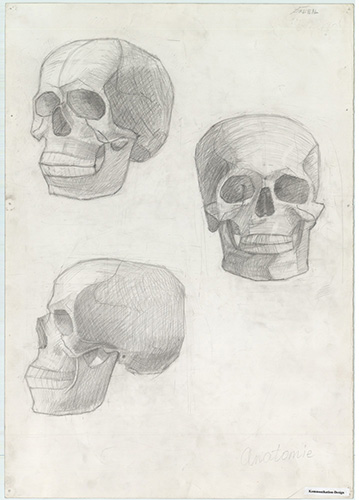
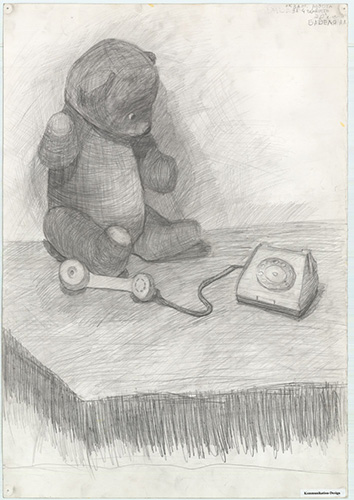
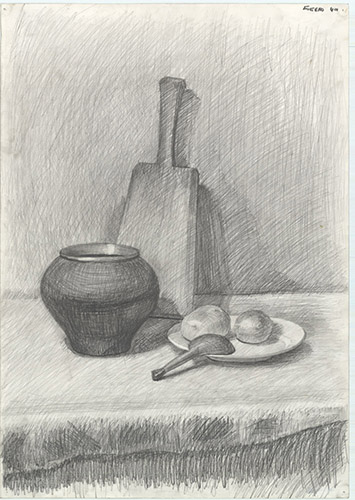
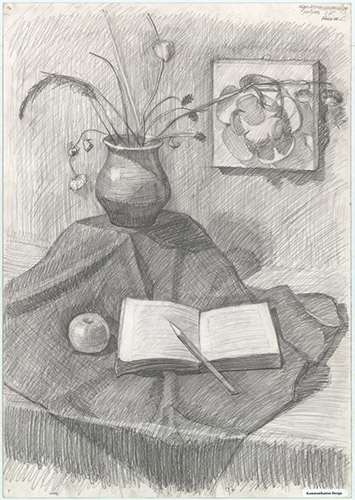

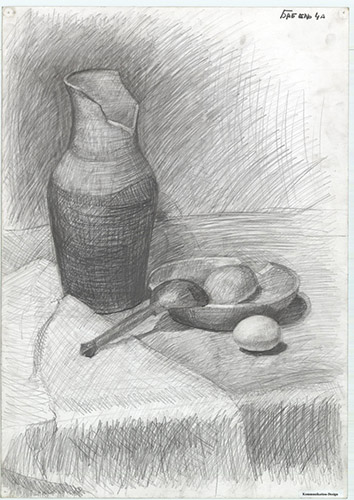


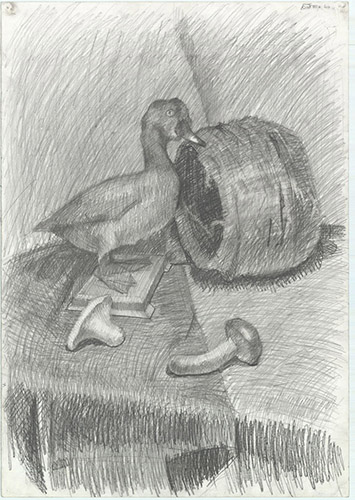
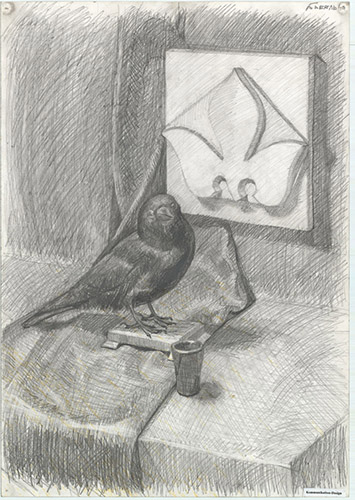
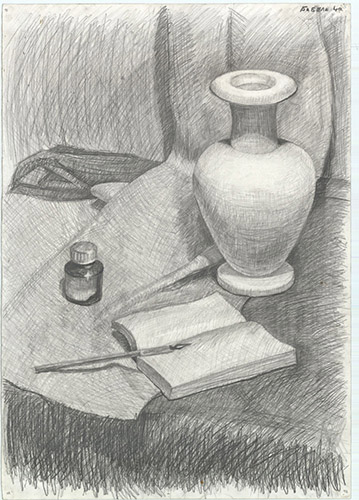
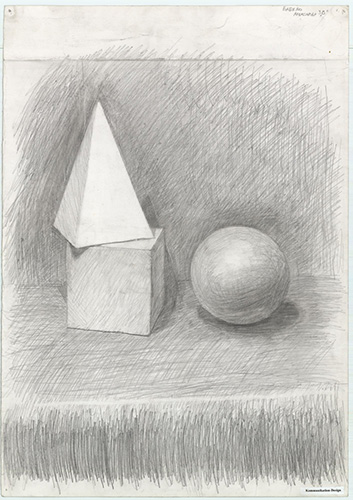
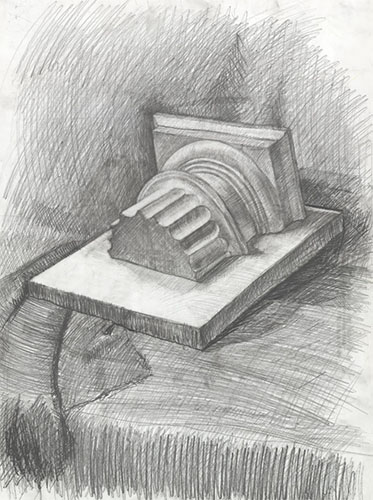

Painting
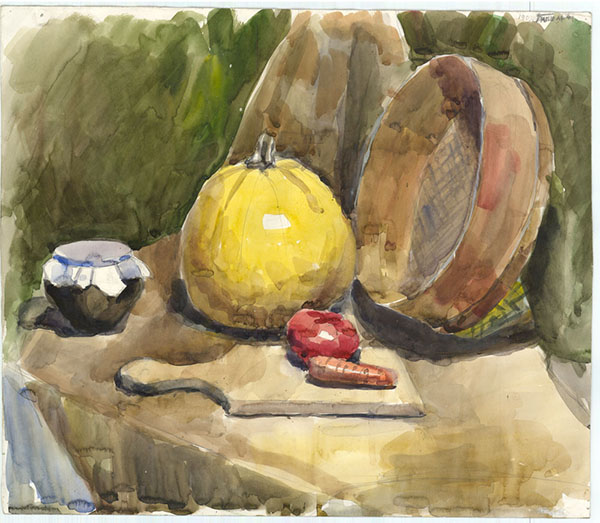
At the heart of each picture is a drawing and panel painting. In watercolors the basic rule is observed - the places with light tones should be left as long as possible light. Dark paints, enveloping the light, create a glare. One more important thing must be taken into account, that, in fact, white color can be obtained only due to the white color of the paper. To more accurately convey the volume, the colors are mixed. In this case, the consistency of the paint also plays an important role


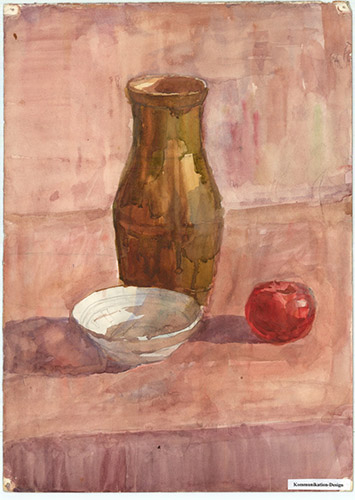

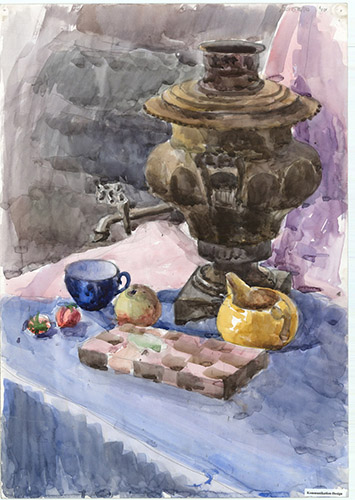
Panel painting

In this discipline we studied the structure of the picture: how to place objects on a sheet, what to put on the foreground, its proportions to the underside and top of the picture, how to fill the background. To sketch people for me is more interesting than a still life, since it is possible to use more different auxiliary techniques when the hatching and filling with colors. The portrait requires great care not only when observing proportions, but also attention to clothes. The work "Conversation" I did first in a pencil to convey the contrast between light and dark tones. And then I tried to paint.
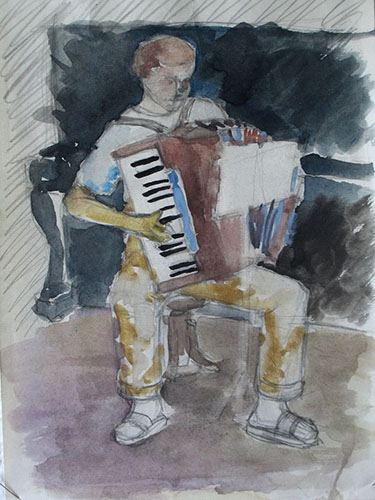
Applied arts
In the lessons of applied arts, we studied the forms of the bodies of animals and people, and then sculpted. Our material was clay, from which we learned to make Filimonov toys. We started with simple ducks, chickens, going over to figures more complicated, like bears, cats, horses, then to ladies with soldiers. We also studied the technology of painting this toy: colors, elements, rules for applying motives, their sequence, up to the needed size of the paintbrush. The main features of Filimon's products
three colors: yellow, red, green
the whole figure is drawn from one piece of clay
all the outlines of the figure are mostly round
Finished products were then fired and painted. Folk art in Russia is very developed. Many areas are famous for making toys from clay. There are Abashevo, Tver, Dymkovo, Gzhel, Filimonovo and other folk toys.
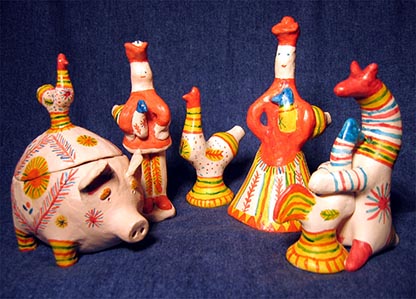
Folk art, folklore
Filimonovo toy - russian folk art, its name derived from the village of the same name Filimonovo, where it was developed.

Tischuhr "Troika"
"Troika", the sculptural composition in the filimonovo style with the clockwork Chelabinsk Watch Factory (ЧЧЗ), Alexander Babel, 2001.
Plein air (Plain air)

Every summer for two weeks in early June we had an plein air. Four hours a day we painted outdoors. Our task was to depict the nature, houses and figures of people in the right proportions. This is important for such an subject as "Panel painting".
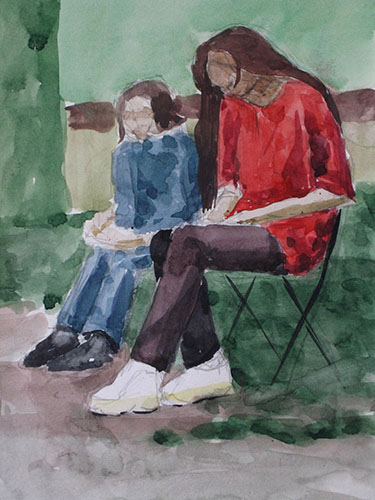
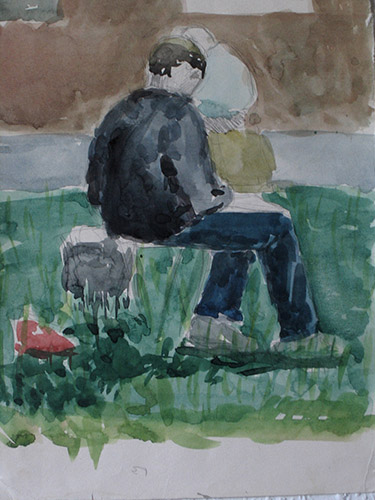
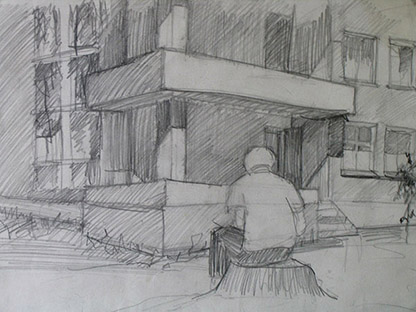
"Filimonovo glade"
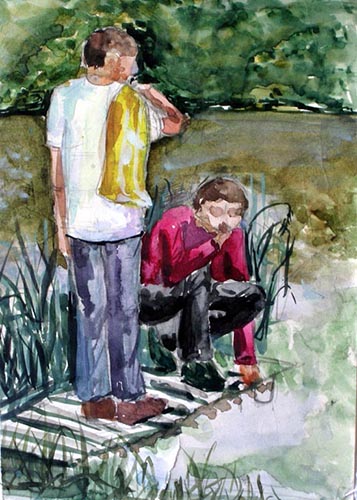
Still there was an opportunity in the summer to go from school to a tent camp, which was located not far from the village Filimonovo. Our leaders were Milyutina Lyudmila Stanislavovna, Pingachev Andrei Nikolaevich, and others. We lived in tents, cooked themselves, picking berries for evening tea. We also harvested clay for the lessons of the "Applied arts" and draw a lot. My work "Conversation" is made during this trip. I was two times in this tent camp.
